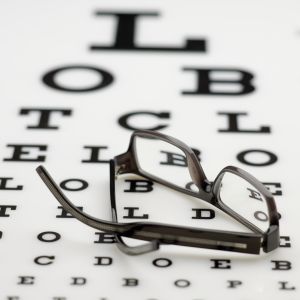Focusing on Hispanic Eyecare
ST. LOUIS, June 24 /PRNewswire/ — If you are having difficulties with your eyesight or need a complete eye exam, which eyecare professional should you visit? The answer may not be as crystal clear as it seems because there are various types of eye care professionals, such as opticians, optometrists and ophthalmologists, and all of them play an important role in contributing to proper eyecare.
The American Optometric Association (AOA) and its members are committed to improving the quality and availability of eye and vision care for all Americans. However, we have noticed that Hispanic patients sometimes shy away from visiting an optometrist because of previous knowledge derived from a cultural background that defines the role of the optometrist differently in the United States than how is defined in many countries in Latin America.
In order to simplify the task of finding proper eye care in the blink of an eye, let us take a quick look at the three O’s of eye care: Optometrist, Ophthalmologist and Optician.
The Optometrist is an eye care doctor who examines, diagnoses, treats and manages diseases and eye disorders. This professional has gone through four years of college, an additional four years of study at a college of optometry, and in many cases, one more year in a residency program. A doctor of optometry will tell you if you need glasses and will look further to determine if you suffer an eye condition or eye disease. This professional can also prescribe medication. Optometrists are the largest eye care profession and provide two- thirds of all eye care services. In summary, an optometrist in the U.S. is a doctor in optometry who diagnoses and treats eye diseases and conditions, including prescriptions of eyewear and of the appropriate drugs.
If your children need to get an eye exam before the opening of the school year, or if one morning you notice their eyes could have symptoms of pink eye, this is the eyecare professional to see.
The Ophthalmologist, on the other hand, is the professional to visit if you have cataracts that may require surgery, as this eye care provider is a medical doctor licensed to practice medicine and perform eye surgery. The optometrist often diagnoses the cataracts and refers the patient to the ophthalmologist for further care.
The Optician also has a role in your eyecare, because in conjunction with an Optometrist or an Ophthalmologist, this eye care professional is licensed to dispense eyewear for patients. They will be able to tell you which frames and types of lenses best suit the prescription of your optometrist, and help to make choices based on your particular needs and style.
The AOA and Transitions Optical, Inc. are partnering to actively reach out to Hispanic eyecare patients to provide them with educational materials developed in Spanish to suit their particular needs. To facilitate communications and improve access to eyecare, the AOA has developed www.aoa.org, where you can find valuable information under “Informacion acerca de sus ojos” including a narrative about visual development from childhood to adulthood; also visitwww.aprendasobreanteojos.com and www.yonosabiaeso.com, developed by Transitions to offer you and your family educational content for all ages.
Next time you need to choose an eyecare professional, remember the three O’s, ready to work together and provide you and your family with the best eyecare.
Source: Transitions Optical, Inc.; American Optometric Association – By Peter H. Kehoe, O.D., President, American Optometric Association







